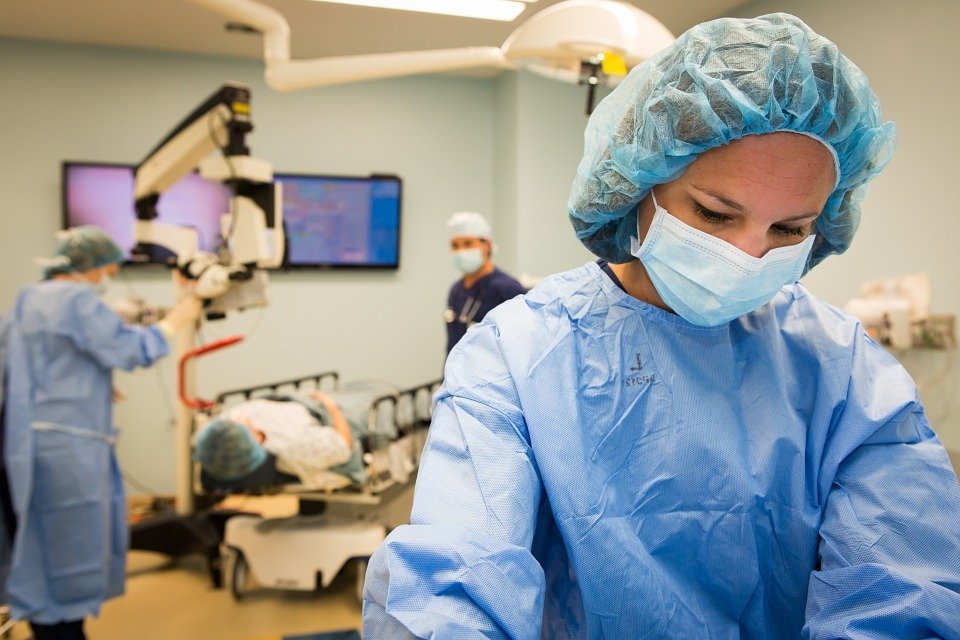Downtime is essential for proper post-op wound healing. Surgeons are usually very strict about rest and activity intensity in the first few weeks after invasive procedures. But is there a definitive list of recovery periods before patients can get back on the active track? Downtime duration will mainly depend on the type of surgery and the patient’s condition. After light procedures, a week of rest may be enough, but serious operations may need longer downtime and strain avoidance.

Recovery Periods for Surgeries
Eye surgery
Following eye surgery, FDA recommends avoiding non-contact sports for at least 1-3 days. Though, the period may vary depending on the duration and intensity of specific activities and the patient’s condition. There should be no swimming and similar water sports for up to 2 months. Diving may have to wait for up to 6-12 months, though. While the patient can resume intense contact sports such as karate and boxing only after around four weeks. The observance of safety standards and proper use of dedicated medical supplies are significant.
Liposuction
Due to its minimal impact on muscle and bone structures, liposuction involves downtime of 7-10 days. There can be only light exercises after this period. One should avoid intense workouts involving running, strength training, and weight-bearing for about four weeks following the procedure to cut the risk of post-op complications.
Breast augmentation
The 7-10 day rest period also applies to breast augmentation procedures. With cosmetic breast surgery, light exercises such as stretches and bends are significant after the first week. While lifting and intense training targeting pectoral muscles such as weight training and cardio should be avoided in the first month after the procedure.
Abdominoplasty
For abdominoplasty, physicians typically recommend longer downtime so that the wound could heal fully before the resumption of physical activity. After about a month, light exercises are necessary for proper healing, and workout duration and intensity can gradually increase as of the fourth week. There shouldn’t be any high-intensity aerobic workouts for around two months after the procedure, though. Usually, the doctor instructs the patient to go light and work toward higher activity intensity.

Knee and hip replacement surgery
After knee or hip replacement surgery, physical therapy is usually recommended as an integral part of recovery. Walking, swimming, and low-impact exercises such as golfing or gardening can help restore optimal joint flexibility. Consultation with the physician upon removal of sutures, i.e. once the wound has healed, is important before doing such activities.
In hip replacement patients, therapy can begin as soon as the day after surgery, and once taken up, it can last up to 2 months. The patient must avoid pivoting or twisting on the operated leg for 2-6 months following the procedure.
For knee replacement surgery, the doctor may recommend riding a stationary bike after 3-6 weeks in view of preserving muscle tone, knee flexibility, and bone density. Taking calcium supplements is not uncommonly prescribed to patients, especially to vegans and elderly people who naturally lack calcium due to their diets and age.
Heart valve surgery
Downtime for heart valve surgery is highly individual. The physician usually establishes the downtime according to the patient’s age and physical condition. Light exercises may be introduced after a few weeks, but strenuous activities and lifting heavy objects should be avoided for at least 6 weeks. For optimal recovery and improved cardiovascular health, the patient should incorporate up to 150 minutes of light to moderate physical activity as soon as the heart rate stabilizes.
• Read: Walking Benefits for Health
Spine fusion surgery
For spine fusion surgery patients, doctors usually recommend light physical activity such as walking in the first 1-4 weeks following the procedure. Physical therapy normally begins after at least 6 weeks, and it can last 2-3 months. One should avoid bending, lifting, and twisting for 3 months following surgery. Besides, modifying the activity intensity is important to put minimal strain on the spine.
Back surgery
Light exercises and stretching are acceptable for back surgery patients once the wound has healed. Adequate activity intensity can significantly enhance recovery and decrease the risk of pain episodes. Doctors often prescribe water therapy to cut the risk of post-surgery injury. This also helps in the gradual rebuilding of the supporting muscle structure in the operated area.
These general guidelines may vary depending on the type of surgery and the patient’s physical shape and health. Before resuming normal activity, the patient should consult the doctor and discuss the appropriate workouts in detail. With patience and gradual activity increase, most patients should be back on the fit track within months.

Leave a Reply